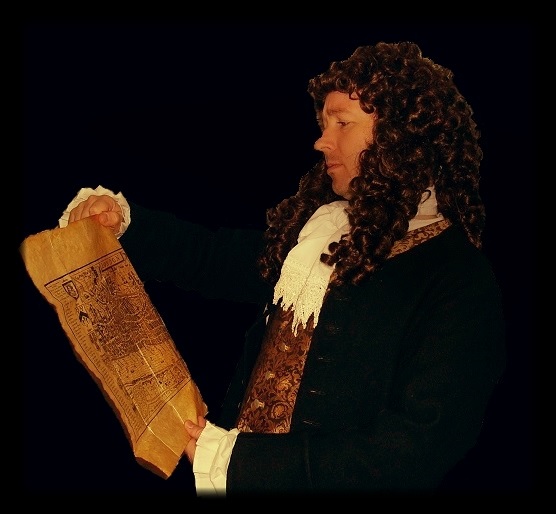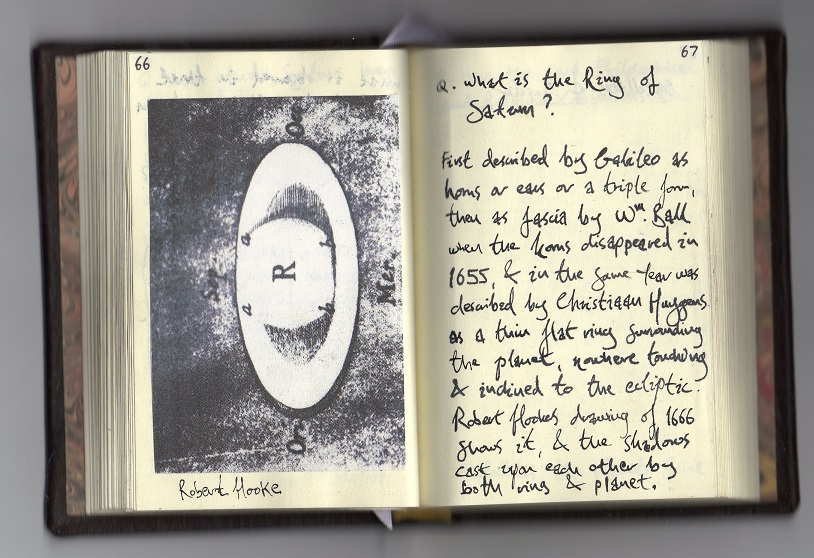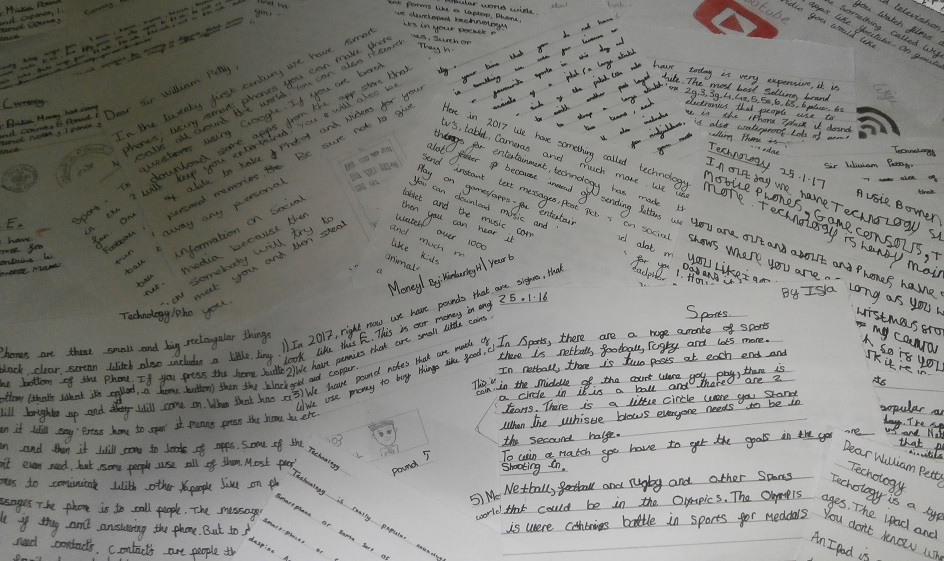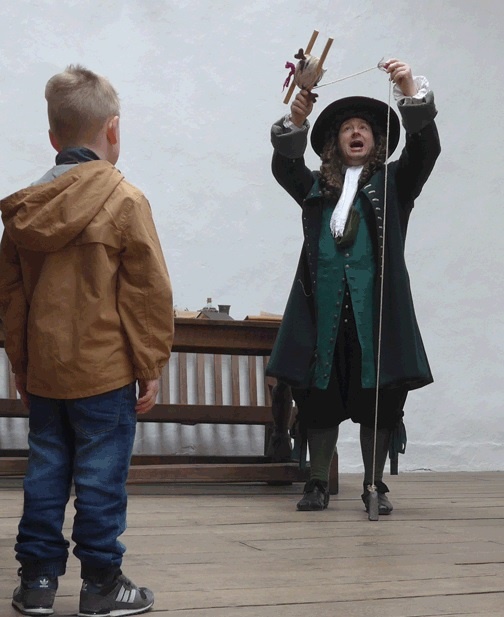For both Key Stages 1 and 2, from one class to the whole school
(Available by special arrangement.)
Sir William was a ‘natural philosopher’, a mathematician and the inventor of several novelties, such as a double writing machine and a ‘double bottomed’ boat. As one of the founder members of the Royal Society, he witnessed many experiments and novel demonstrations exploring the limits of knowledge at the time. He mixed with famous thinkers like Christopher Wren, Robert Hooke, Bishop Wilkins and Robert Boyle, and other important people, including King Charles II, with whom he spoke regularly.
 When I discovered that among his voluminous writings he considered the future population and prosperity of England, and even tried to predict how big the population could and would swell to, it gave me an idea. What if Sir William combined his curiosity and ingenuity to find a way to travel through time? He could then see for himself how England had changed over the centuries, and learn of the discoveries made in natural philosophy and the advances in the mechanical arts.
When I discovered that among his voluminous writings he considered the future population and prosperity of England, and even tried to predict how big the population could and would swell to, it gave me an idea. What if Sir William combined his curiosity and ingenuity to find a way to travel through time? He could then see for himself how England had changed over the centuries, and learn of the discoveries made in natural philosophy and the advances in the mechanical arts.
And so my time traveller character was born!
Find out More...
A Time Traveller in School!
A very old letter:
Before the visit, I can send a letter from Sir William to the teacher(s) involved, which explains what he is going to attempt. As he puts it, he hopes to ‘arrive at this spot on [the date of the visit]’.*
The teachers can then claim the caretaker gave this letter to them, who got it from the previous caretaker (and so on), who got it from the owner of the land before the school was built. Thus it has been passed down through the years, but always kept at this particular place. The teachers can mention this letter in an assembly before the day of the visit, perhaps admitting they are not sure whether it can be true because it is so strange, and suggesting the only thing to be done is to wait to see if anyone does arrive.
* Having studied all possible outcomes, Sir William also expresses his concern whether or not England continues with the Julian calendar, or has adopted the Gregorian (which would alter the date of his arrival by 13 days). Time travel is not as simple as one might think!
Before the day:
Once the children know what Sir William is going to attempt, they can prepare questions for him in advance. What can they ask of a gentlemen from 1674? Importantly, they should also consider what exactly they can tell him about their own time. What modern marvels can they reveal? What ingenious inventions they can describe to him? This is a chance for them to consider how things actually work, including the difference between how a thing works in the sense of how one uses it, and how a thing works in the sense of what machinery, fuel and mechanical parts etc make it do what it does. (The difference between, “You press a button to turn it on,” and, “It has wires &/or a battery that deliver a force called electricity to it,” etc.)
Sir William’s Arrival:
Sir William arrives carrying as much as he can – all the things he might need to explore and survive for a day in the future. He has instruments for measuring and studying the world including a flea glass, tweezers, a scalpel, a measuring stick and weighing scales. He has a plague doctor’s mask in case the air is poisoned with foul miasmas, as well as several bottles of medicine, from Laudanum to Sal Ammoniac, as a precautionary measure. He has paper, quill pens, ink and black lead to record in writing and pictures what he finds. As he cannot be sure that the England of the future will be a safe place, he even brings several weapons, such as a pistol to scare off packs of wolves, and a sword to defend himself against brigands, as well as an axe (in case he finds himself trapped in a locked room!) Perhaps most importantly he has a little leather bound book in which he has noted hundreds of questions and queries he hopes to find the answers to.  One of the first things Sir William learns when he arrives is that he can’t travel very far. It seems because he has moved in time, he has become somewhat stuck in space! This means he cannot walk out of the school to see the world for himself – when he tried to do so earlier he became very dizzy, almost fainting. (He’s been recovering in the staff-room ever since!) So he must remain in the school, relying upon the children to tell him all about the modern world. In truth, it is a remarkable stroke of luck that he should arrive in a school full of such well educated and clever children.
One of the first things Sir William learns when he arrives is that he can’t travel very far. It seems because he has moved in time, he has become somewhat stuck in space! This means he cannot walk out of the school to see the world for himself – when he tried to do so earlier he became very dizzy, almost fainting. (He’s been recovering in the staff-room ever since!) So he must remain in the school, relying upon the children to tell him all about the modern world. In truth, it is a remarkable stroke of luck that he should arrive in a school full of such well educated and clever children.
Find out More...
A Time Traveller in School!
Outline Format and Activities:
With several classes, Sir William starts with an assembly of about 30 minutes to introduce himself, talk about what he has done and about what he wants to learn. Importantly he agrees with the children that if they tell him what they can about the present age, he will tell them about his time, answering their questions and showing them the things he has brought with him. He also asks the children to put together notes – explanations, descriptions and diagrams – describing aspects of the modern time that they think are important or interesting, and that they think Sir William should know about. He carries a bundle of papers with him which he hands to the teachers during the assembly. This written work is a job the children can do when Sir William is working with the other class(es).
From some short, time-hopping tests, Sir William has learnt that he can’t take anything back through time with him when he returns, only what he brought with him. If he tries to do so, the modern artefact acts like an anchor holding him in the here and now. His own papers, however, he can take back, and he belives a dab or two of ink and a few pencil scratches would not be enough to stop him. Thus the children can do drafts on their own papers, but the final, neat information will have to go on his papers so that he can return with them. During the assembly Sir William will emphasize that the papers should be legible, neat, precise and concise, and that the children should coordinate their efforts to ensure they each write about different aspects of their world.
 After the assembly, we divide the day into several group sessions of roughly equal time, involving conversational Q&A and the demonstration of artefacts. These can involve individual classes, or pairs of classes, and should be at least an hour or so long.
After the assembly, we divide the day into several group sessions of roughly equal time, involving conversational Q&A and the demonstration of artefacts. These can involve individual classes, or pairs of classes, and should be at least an hour or so long.
These sessions will differ every time as the children will have diverse interests, and both the children and Sir William are likely to ask different questions, leading down a variety of paths. There are two whole worlds (today and 1674) of possible topics to explore! The teaching staff can ask questions too, prompting Sir William to explain or show things the children might find interesting and enlightening, or which link to whatever the children are currently studying. Sir William will allow individual children to handle artefacts, under supervision for the more delicate, heavy or otherwise hazardous items, and can pass some ‘safe-to-handle’ artefacts around the group.  The day ends with a plenary assembly of approximately 30 minutes, in which the children read aloud some examples of the work they have done, as well as allow Sir William to round the day off.
The day ends with a plenary assembly of approximately 30 minutes, in which the children read aloud some examples of the work they have done, as well as allow Sir William to round the day off.
When working with one class, Sir William can be present throughout the day to support, advise and encourage the children’s written work, and to do work with smaller groups rather than the whole class.There would be much more opportunity for individual children to interact personally with Sir William, and to handle artifacts. The day would much more easily incorporate the task of researching specific, particular aspects of the modern world, allowing the creation of a more comprehensive set of information pages. And of course there would be much more time for Sir William to tell stories and describe aspects of his own time.

